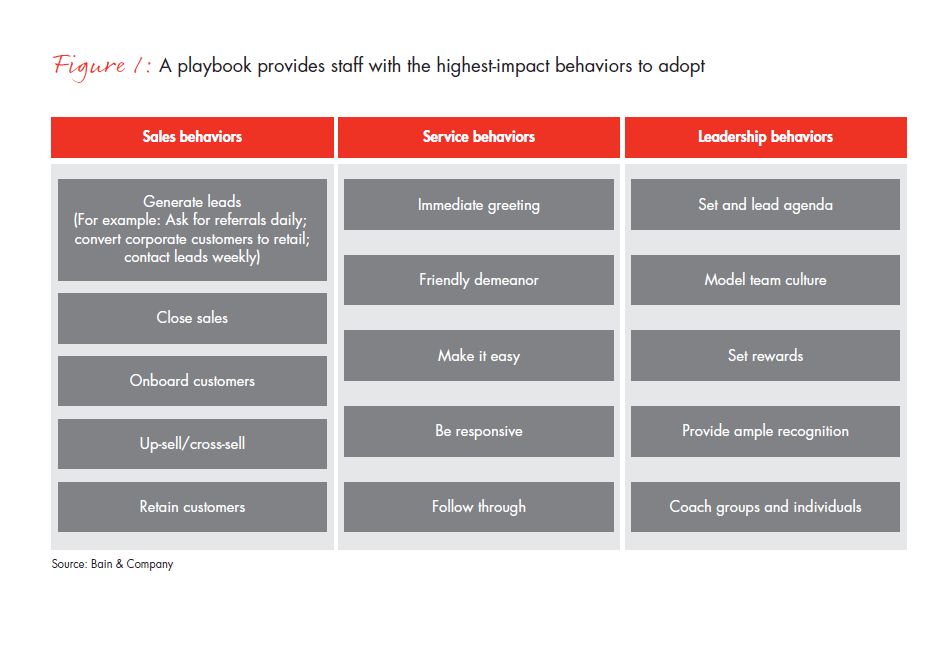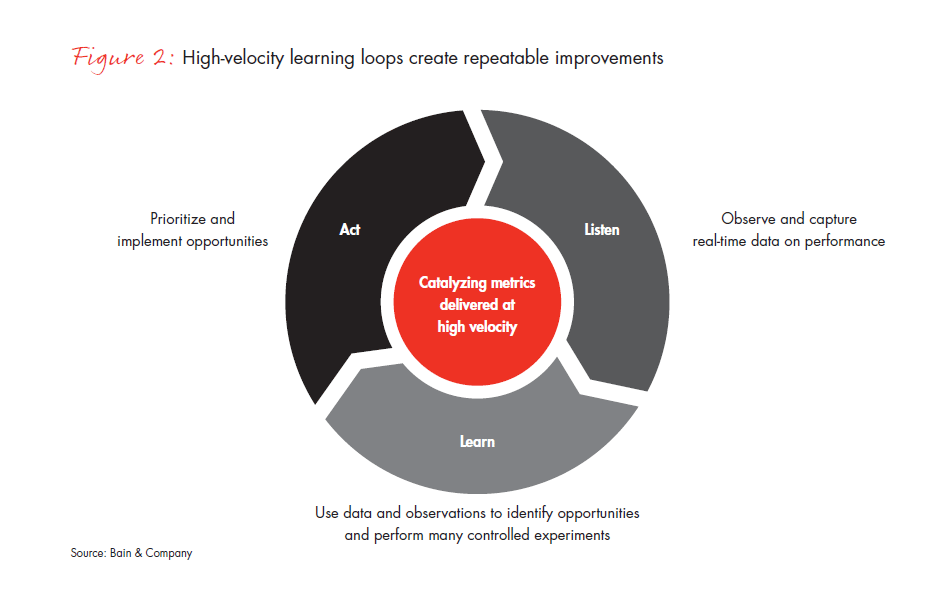Brief
As the digital technology wave washes through banking across Asia, there’s that nagging matter of what to do with a huge number of employees accustomed to traditional ways of banking. How will the role of employees change in this new world?
Given the pressures on margins in a low-interest-rate environment, Asian banks are seeking higher productivity from their staff in an increasingly digital world. To succeed in this transition, forward-thinking banks are investing in behavioral science that makes it easy, and fulfilling, for staff to do the right things and hard to do the wrong things. These banks have begun to realize the triple-crown benefits of an improved customer experience, greater employee engagement and stronger financial results.
Most executives at large retail banks sense that digital technology is rapidly changing their business. A growing number of customers have embraced mobile and online banking, especially for routine transactions and to compare loans or investment products among providers. (See the Bain Brief, “The digital challenge to retail banks.”) Digital channels can create “wow” experiences that make routine transactions such as bill paying fast and convenient. And these experiences, along with moments of truth such as resolving fraudulent activity, can prove decisive in winning customers’ loyalty. Routine transactions handled at the branch, by contrast, don’t have a big impact on loyalty, and are more prone to annoy than delight customers. (See the Bain Report, “Customer Loyalty in Retail Banking: Global Edition 2012.”) Digital channels, if executed well, also can divert volumes from higher-cost brick-and-mortar branches.
The branch won’t disappear, but the branch network will evolve to a very different shape. We estimate that one-third of branches will need to move to a better location. Almost all branches will need reformatting so that they can capture the full opportunity of their local market. Banks will be compelled to design new formats that can integrate seamlessly with mobile, online, call center and other channels—all with an eye to reducing costs and improving the customer experience. To that end, some banks are applying more behavioral science to the selection of branch sites and format design.
Technology investments will deliver just a fraction of the potential benefits unless banks understand and act on the implications for staff capabilities and behavior. In an integrated “omnichannel” approach, basic transactions and sales of simple products increasingly migrate to digital channels. Branches more often serve as showrooms for complex product sales and as venues for expert advice on investments, mortgages and educating consumers on using digital channels. In-person sales and service interactions will appeal to consumers with more complex needs while follow-up communications and ongoing relationship management can be done remotely through video calls or email. Employees will be called on to engage in more meaningful ways with customers. They’ll have to get up to speed—keeping pace with their customers—on how to use new digital tools while maintaining productivity within an evolving branch environment.
Making it easy to do the right thing
With branch evolution comes a new mix of required skills, particularly a shift from administrative services, such as taking deposits and handling cash, to sales activities, product advice and information services. Frontline positions will require stronger generalist, interpersonal skills than do today’s delineated roles of teller or specialist lender. Not all tellers can become advisers, and Asian banks will likely need to hire new people for certain positions and trim staff in others.
Many branch employees, however, can make the transition to new roles if given the right support, motivation and coaching. Forward-thinking banks thus are starting to invest in rewiring their staff, not just their computers. They’re using insights from behavioral science to build a performance system that operates at high velocity and provides fast feedback to employees. And they’re tapping branch managers as well as senior executives to coach through the digital transition.
Based on these efforts, in combination with adjustments to the branch network footprint and format, we’ve seen promising early results along a triple crown of:
- Vastly improved experiences for customers (translating to a 20% lift in customer loyalty scores)
- More engaged branch staff (a 6% rise in engagement in one Asian bank)
- Superior financial outcomes (a 20% increase in profit across the branch network)
The experiences of banks and companies in other service industries suggest several actions that will raise the odds of success in realizing the digital transformation.
Identify the employee behaviors that will make the most of technology. This might sound like a soft exercise, but rigorous analysis can be employed to identify the top-performing employees in sales, service and leadership, and to isolate their distinctive, replicable behaviors. The best behaviors today and the most valuable behaviors for tomorrow can then be assembled into a playbook that will vary by role and will be continually updated based on customer feedback from the field (see Figure 1).

Consider the behaviors involved in bringing new customers on board: demonstrating the utility of technology-enabled products, like mobile payments, so that customers walk out knowing how to use them; ensuring that customers adopt the technology within a few weeks; and actively managing future interactions to cross-sell and up-sell appropriately, based on customers’ needs and priorities. As the branch evolves, employees’ deeper advisory role, with fewer routine interactions, makes each of these interactions more important.
Banks typically find that the biggest lift in the realm of behavioral change comes from moving middle performers to high performance. The lowest performers may simply be the wrong people for their jobs and likely won’t respond to training and other investments. Top performers don’t need a major investment, but rather the latitude to run with the new plan.
Design a system to make these new behaviors stick. Identifying the most effective behaviors is relatively easy compared to embedding them throughout the branches. To change behavior on the front lines, many leading companies rely on a cycle of new behavior and reinforcement, repeated enough times that it becomes habitual. Companies that use this system, which we call a High-Velocity Performance System®, have several characteristics.
First, they rally around one or two catalyzing metrics, communicated back to employees quickly and frequently. The metrics make it clear to employees what matters to the bank’s performance, establishing a causal link between actions and outcomes. These can take several forms, such as metrics tracking customer loyalty rather than simple satisfaction, customer appointments booked in the branch or, for a call center, fi rst-time resolution rather than average handle time.
These companies also foster a discipline of continuous learning behavior. They have developed an ability to improve again and again by using a high-velocity feedback loop of action-information-reaction (see Figure 2). Feedback from customers goes to the frontline employees most responsible for the interaction, as well as to direct supervisors and other employees who create the policies, processes or product features that indirectly shape the interaction. High velocity is essential here, because an employee will vividly remember the interaction that generated feedback when that data is shared the same or next day.
While training and tools are important to equip employees with proper support, the immediate, after-the-fact consequences are roughly four times more powerful in encouraging new behavior. Consequences remind employees every day of their mission and, through self-awareness and positive peer pressure, foster behavior that leads to higher performance.

We have found that the most effective mix of consequences is about 80% positive and 20% negative, in part to build trust among frontline employees and managers. That means bank management needs to devise a lot of positive consequences, at a high frequency. The choice of consequences will depend on the employee group and the specific operational challenges, but they can range from monetary bonuses to special assignments or a prime parking space.
Empower branch teams so they take ownership of the plan. Adoption of new behaviors accelerates when the branch manager and local team participate in choosing the behaviors that will affect performance. Senior leadership sets the performance target, and local branches have some leeway within the framework to choose how they reach the target.
Branch managers in particular must be on board with the planned changes, otherwise directives from the C-suite through regional or local managers will break down at the branch level. The branch manager can ignore new practices that are adopted in other areas, so he or she must embrace the changes in order for feedback loops to succeed at the front lines.
The branch team starts with a diagnosis of the branch, then looks at its financial and operating performance against a comparable cohort and selects the most valuable priorities to pursue. It’s often useful to develop an action plan through a workshop facilitated by an expert and respected senior branch staff.
Don’t skimp on coaching and support. Certain roles serve as linchpins during times of disruption, branch managers and regional managers among them. Yet it’s rare for branch managers to get dedicated support. They merit weekly coaching for at least two months, and then monthly coaching after that. Their quarterly reviews should cover how they are executing on the action plan. And banks should consider starting an online peer-to-peer network that enables fellow practitioners to share successes and challenges.
Walk the talk
With the acceleration of digital technologies throughout all aspects of banking, Asian banks have a huge opportunity to improve their branch networks. Forward-thinking banks have already begun to reshape branches and redeploy staff, testing and learning as they go.
Bank executives play key behavioral roles in this transformation. Staff will be looking to senior management for cues about how to proceed:
- Do senior leaders take an outside-in perspective that emphasizes the customer’s priorities rather than only the volume of product sales?
- Do leaders spend time at the branch talking with staff? Do they articulate the business case simply and clearly?
- Do they give staff the power to do the right thing?
- Have they identified a handful of critical metrics and promoted consequences that will unlock performance in the organization?
- Are they providing high-quality, respected coaches?
Employees will note what you do, not just what you say. Excelling in each area raises the odds of success in seizing that triple crown of customer loyalty, employee engagement and financial outcomes.

